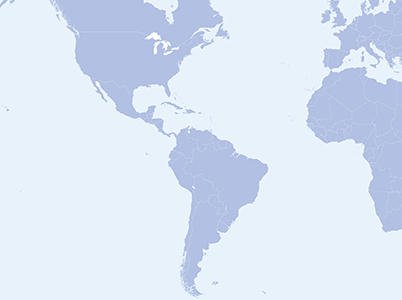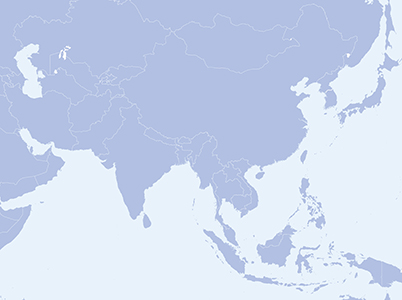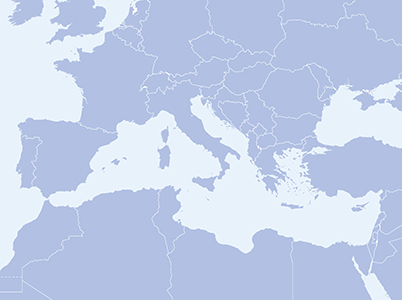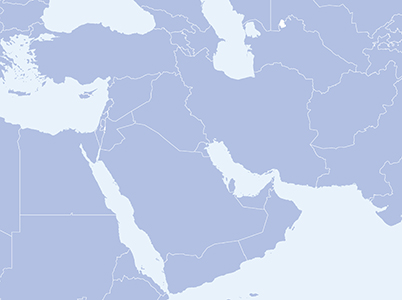| 2023.MMP0002 |
Uncategorized |
40.95496299, 25.65250242
|
Egnatia Highway between Alexandroupolis and Komotini, Greece |
Europe |
| 2023.MMP0004 |
Western Balkans |
43.31568829, 21.91337329
|
Died in Nis clinical centre, Serbia after arriving in RC Presevo with respiratory illness presumably contracted during/exacerbated by journey |
Europe |
| 2023.MMP0010 |
Belarus-EU border |
56.09099932, 27.94637954
|
In the Verkhnedvinsk district on the Latvian border, Belarus |
Europe |
| 2023.MMP0011 |
Belarus-EU border |
56.09099932, 27.94637954
|
In the Verkhnedvinsk district on the Latvian border, Belarus |
Europe |
| 2023.MMP0012 |
Italy to France |
43.78517187, 7.517307602
|
On the roof of a TER passenger train in Menton Garavan station, Menton, France |
Europe |
| 2023.MMP0019 |
Belarus-EU border |
52.68455073, 23.79601001
|
Unspecified location in Białowieża Forest, Poland |
Europe |
| 2023.MMP0045 |
Belarus-EU border |
51.762542, 23.594236
|
Unspecified location on the Belarus-Poland border |
Europe |
| 2023.MMP0046 |
Belarus-EU border |
52.096721, 23.593233
|
Unspecified location in the wetlands of Eastern Poland the Belarus-Poland border |
Europe |
| 2023.MMP0047 |
Belarus-EU border |
52.096721, 23.593233
|
Unspecified location in the wetlands of Eastern Poland the Belarus-Poland border |
Europe |
| 2023.MMP0053 |
Belarus-EU border |
52.67688, 23.884845
|
Unspecified location near the Polish border in the Pruzhany region, Belarus |
Europe |
| 2023.MMP0058 |
Belarus-EU border |
52.69701401, 23.91312178
|
5 meters away from fence with Poland, Belarus |
Europe |
| 2023.MMP0073 |
Western Balkans |
45.105328, 18.091913
|
Bodies found at Gorjna Bebrina, Brod/Posavina County, Croatia |
Europe |
| 2023.MMP0076 |
Belarus-EU border |
52.67119103, 23.8807695
|
Remains found in Pruzhany near the Polish border, Belarus |
Europe |
| 2023.MMP0081 |
Belarus-EU border |
52.71974679, 23.7347616
|
Białowieża forest near Hajnówka, Poland |
Europe |
| 2023.MMP0087 |
Western Balkans |
42.78503234, 23.44497954
|
Abandoned truck on highway near Lokorsko, Bulgaria |
Europe |
| 2023.MMP0090 |
Belarus-EU border |
54.84912465, 25.7893894
|
Unspecified location in Belarus near border with Lithuania |
Europe |
| 2023.MMP0092 |
Belarus-EU border |
53.20755259, 23.85851448
|
Remains recovered from Swislocz river near Ozierany, Poland |
Europe |
| 2023.MMP0093 |
Belarus-EU border |
52.69098745, 23.73206356
|
Skeletal remains found by volunteers near Czerlonka in the Bialowieza Forest, Poland |
Europe |
| 2023.MMP0118 |
Western Balkans |
42.21435908, 25.31575994
|
165th kilometer of Trakia highway (A1) not far from the town of Chirpan, Stara Zagora Province, Bulgaria |
Europe |
| 2023.MMP0144 |
Belarus-EU border |
52.72529128, 23.89764415
|
Unspecified swampy area near Bialowieza, Poland |
Europe |
| 2023.MMP0166 |
Belarus-EU border |
55.71902599, 26.88135017
|
Unspecified location near the Latvian border, Belarus |
Europe |
| 2023.MMP0167 |
Belarus-EU border |
55.6957828, 26.82886666
|
Unspecified location near the Latvian border in Braslaw district, Belarus |
Europe |
| 2023.MMP0168 |
Western Balkans |
42.91895731, 22.9429821
|
near Aldomirovo swamp, Dragoman, Sofia, Bulgaria |
Europe |
| 2023.MMP0175 |
Belarus-EU border |
52.81520614, 23.91170469
|
Unspecified location in the Białowieża National Park, Zamosze, Poland |
Europe |
| 2023.MMP0180 |
Belarus-EU border |
52.76905161, 23.88146592
|
Unspecified location in the Białowieża National Park, near the Hwoźna River, Poland |
Europe |
| 2023.MMP0190 |
Belarus-EU border |
53.34367742, 23.78285108
|
Unspecified location near the Polish border in Berestovitsky district, Belarus |
Europe |
| 2023.MMP0203 |
Belarus-EU border |
55.45041386, 26.33321014
|
On the Dysna river, Ignalina, Lithuania |
Europe |
| 2023.MMP0214 |
Türkiye-Europe land route |
40.88026438, 25.87749861
|
On Egnatia Highway, near the city of Alexandroupolis, Greece |
Europe |
| 2023.MMP0215 |
Western Balkans |
45.13348146, 19.19090108
|
On train tracks close to Sid, Serbia at the border with Croatia |
Europe |
| 2023.MMP0216 |
Western Balkans |
44.98279529, 19.64148282
|
In the vicinity of Sremska Mitrovica, Serbia - about 35km from the border with Croatia |
Europe |
| 2023.MMP0217 |
Belarus-EU border |
53.31423248, 20.69328826
|
In the vicinity of Janowo, Poland |
Europe |
| 2023.MMP0252 |
Western Balkans |
44.5317838, 19.22056448
|
Around the old Viscose factory in Loznica, Serbia - at the border with Bosnia and Herzegovina |
Europe |
| 2023.MMP0259 |
Western Balkans |
41.14856623, 22.51278866
|
In Gevgelija, North Macedonia at the border with Greece |
Europe |
| 2023.MMP0260 |
Belarus-EU border |
52.84605251, 23.9989339
|
Unspecified location at the Poland-Belarus border on the Belarusian side |
Europe |
| 2023.MMP0272 |
Belarus-EU border |
52.66159198, 23.49973911
|
Remains found near Istok village, Hajnowski county, Poland near border with Belarus |
Europe |
| 2023.MMP0286 |
Uncategorized |
52.31064447, 4.768272298
|
Remains found in wheelwell of KLM airplane at Schiphol airport, Amsterdam, Netherlands |
Europe |
| 2023.MMP0313 |
Belarus-EU border |
55.68072101, 26.67905826
|
Unspecified location on the Lithuanian border, Belarus |
Europe |
| 2023.MMP0348 |
English Channel to the UK |
50.93877074, 1.906990602
|
In the Calais port bypass, near the A26 interchange, Pas-de-Calais, France |
Europe |
| 2023.MMP0350 |
Belarus-EU border |
52.80950129, 23.93867414
|
At the border fence between Poland and Belarus, by the the village of Masiewo in the Białowieża Forest, Poland - Injured when he attempted the crossing on 4 April |
Europe |
| 2023.MMP0351 |
Belarus-EU border |
53.04525704, 23.55990998
|
In the hospital in Hajnówka after being in an accident on the provincial road No. 685 from Zabłudów to Hajnówka, Poland |
Europe |
| 2023.MMP0351 |
Belarus-EU border |
53.04525704, 23.55990998
|
On the provincial road No. 685 from Zabłudów to Hajnówka, Poland |
Europe |
| 2023.MMP0365 |
Uncategorized |
54.29384187, 23.25060857
|
In the village of Senoji Radiškė, Kalvarija municipality, Lithuania |
Europe |
| 2023.MMP0368 |
Western Balkans |
45.7829178, 19.10747798
|
Died in a hospital in Sombor, Serbia |
Europe |
| 2023.MMP0369 |
Belarus-EU border |
53.19071809, 23.8761528
|
In Świsłocz river near Łosiniany village, Gmina Krynki, Poland |
Europe |
| 2023.MMP0381 |
English Channel to the UK |
50.96905922, 1.945131316
|
Marck, near Calais (Pas-de-Calais), France |
Europe |
| 2023.MMP0391 |
Western Balkans |
42.33306902, 21.95461367
|
In North Macedonia at the 'green border' with Serbia |
Europe |
| 2023.MMP0393 |
Belarus-EU border |
53.2169472, 23.85989034
|
Remains found in the Svislach river, Berestovitsa district, Belarus near border with Poland |
Europe |
| 2023.MMP0415 |
Western Balkans |
45.77782028, 14.22095962
|
In a hospital in Postojna, Slovenia - run over at the train tracks on 5 June |
Europe |
| 2023.MMP0469 |
English Channel to the UK |
50.69652776, 1.636039116
|
On the A16 highway, close to Boulogne-sur-Mer, Pas-de-Calais, France |
Europe |
| 2023.MMP0475 |
Western Balkans |
42.48789659, 26.51559573
|
Yambol hopsital, Yambol, Bulgaria |
Europe |
| 2023.MMP0475 |
Western Balkans |
42.54351047, 26.51559573
|
On Trakya highway, near the village of Drazhevo, Yambol, Bulgaria |
Europe |
| 2023.MMP0479 |
Uncategorized |
50.94794355, 13.87246829
|
On A17 highway near Pirna, Saxony, Germany - en route from Czech Republic |
Europe |
| 2023.MMP0616 |
Western Balkans |
46.890955, 19.647471
|
Kecskemet, Hungary |
Europe |
| 2023.MMP0628 |
Italy to France |
44.90150817, 6.718101639
|
The body of a man was found on the Gondrans military road, between Briançon and Montgenèvre, in the Hautes-Alpes, France |
Europe |
| 2023.MMP0631 |
English Channel to the UK |
51.057026, 1.617592
|
The boat capsized in the English Channel, off the northern coast of France near Calais, about 20 km off of Sangatte. |
Europe |
| 2023.MMP0686 |
Türkiye-Europe land route |
40.93108598, 25.91238872
|
Remains found in Dadia forest in Avantas, near Alexandroupolis, Greece |
Europe |
| 2023.MMP0687 |
Türkiye-Europe land route |
41.02645905, 26.19302345
|
Remains found in Dadia forest in Lefkimmi, near Alexandroupolis, Greece |
Europe |
| 2023.MMP0688 |
Belarus-EU border |
52.46097657, 23.38407512
|
Unspecified location in Kamianets District on the Polish border, Belarus |
Europe |
| 2023.MMP0689 |
Belarus-EU border |
55.77352841, 27.93216911
|
Remains found in Verkhnyadzvinsk near the Latvian border, Belarus |
Europe |
| 2023.MMP0714 |
Türkiye-Europe land route |
40.86318839, 25.9968034
|
Near Alexandroupolis, Greece |
Europe |
| 2023.MMP0738 |
Western Balkans |
45.77492842, 21.21402
|
Fell from apartment building where he was held hostage by smugglers, Calea Torontalului, Timișoara, Romania |
Europe |
| 2023.MMP0739 |
Western Balkans |
41.57692894, 21.94683048
|
On the Gevgelija-Skope route, in Gradsko, North Macedonia |
Europe |
| 2023.MMP0889 |
English Channel to the UK |
50.9903813, 2.2254891
|
In the Bourbourg canal in Loon-Plage, Nord department, France |
Europe |
| 2023.MMP0890 |
English Channel to the UK |
50.94103779, 1.88466906
|
On the train tracks by Chemin Castre, Calais, France |
Europe |
| 2023.MMP0916 |
English Channel to the UK |
50.95084755, 1.766839604
|
Sangatte, Pas-de-Calais, France |
Europe |
| 2023.MMP0926 |
English Channel to the UK |
50.46293598, 1.580049705
|
Remains discovered at the beach of Merlimont, Pas-de-Calais, France |
Europe |
| 2023.MMP1044 |
Western Balkans |
46.39328972, 19.73773434
|
Near Kiskunmajsa, Hungary |
Europe |
| 2023.MMP1047 |
Uncategorized |
48.24627651, 12.410189
|
A94 motorway exit between Ampfing and Waldkraiburg, Germany, near border with Austria |
Europe |
| 2023.MMP1079 |
Belarus-EU border |
55.788042, 26.928627
|
Unspecified location close to the border with Latvia, Braslav District, Belarus |
Europe |
| 2023.MMP1080 |
Belarus-EU border |
55.7836984, 27.31217859
|
Unspecified location in Belarus close to the border with Latvia |
Europe |
| 2023.MMP1081 |
Uncategorized |
43.47008949, 6.732626544
|
At the Capitou toll in Fréjus, Var, France |
Europe |
| 2023.MMP1090 |
Belarus-EU border |
52.68924571, 23.89150488
|
In a swamp around Białowieża (directly on the border with Belarus), in Hajnówka County, Poland |
Europe |
| 2023.MMP1091 |
Belarus-EU border |
52.57068806, 23.32219548
|
35km south-west from Białowieża, between the towns of Dobrowoda and Kleszczele, Poland |
Europe |
| 2023.MMP1104 |
Western Balkans |
42.49857251, 25.99751316
|
On 253th km of Trakiya highway, aorund Nova Zagora, Sliven Province, Bulgaria |
Europe |
| 2023.MMP1117 |
Western Balkans |
46.15238907, 19.9657312
|
At abandoned farming warehouses near the village of Horgoš, Kanjiža, North Banat District, Vojvodina, Serbia |
Europe |
| 2023.MMP1118 |
Italy to France |
44.89668112, 6.641941662
|
Durance river near La Schappe park, Briançon, Hautes-Alpes, France |
Europe |
| 2023.MMP1134 |
Western Balkans |
40.571899, 21.019112
|
Unspecified location in the town of Trestenik, Albania |
Europe |
| 2023.MMP1140 |
Belarus-EU border |
52.661763, 23.734527
|
In the Black Forest outside of Hajnowka, Poland |
Europe |
| 2023.MMP1141 |
Belarus-EU border |
56.001224, 27.846376
|
Near the Latvian border in Verkhniadzvinsk District, Belarus |
Europe |
| 2023.MMP1142 |
Western Balkans |
45.495112, 15.372366
|
Jakovci Netretićki, Karlovac County, Croatia |
Europe |
| 2023.MMP1147 |
Uncategorized |
56.038483, 27.845911
|
Unspecified location near the border fence with Latvia, Verkhniadzvinsk District, Belarus |
Europe |
| 2023.MMP1148 |
Western Balkans |
45.595494, 15.284295
|
Pravutina, Karlovac County, Croatia |
Europe |
| 2023.MMP1149 |
Western Balkans |
44.554378, 15.430992
|
A1 motorway, Lika-Senj County, Croatia |
Europe |
| 2023.MMP1177 |
Western Balkans |
45.520571, 15.325849
|
Bogovci, Karlovac County, Croatia |
Europe |
| 2023.MMP1178 |
Uncategorized |
50.938806, 1.907033
|
Where the A16, A26, and A216 intersect in Calais, France |
Europe |
| 2023.MMP1179 |
Belarus-EU border |
56.041769, 27.852292
|
Unspecified location near the border with Latvia, Verkhniadzvinsk District, Belarus |
Europe |
| 2023.MMP1182 |
English Channel to the UK |
50.642909, 1.555323
|
1 km off the coast between Neufchatel-Hardelot and Equihen-Plage (Pas-de-Calais), France |
Europe |
| 2023.MMP1182 |
English Channel to the UK |
50.63545017, 1.576070087
|
Remains washed ashore at plage Neufchâtel-Hardelot, Pas-de-Calais, France |
Europe |
| 2023.MMP1262 |
Western Balkans |
42.65467455, 23.3594325
|
Kliment Ohridski boulevard near Studentski grad, Sofia, Bulgaria |
Europe |
| 2023.MMP1292 |
Uncategorized |
50.901333, 1.811752
|
Train tracks near the Eurotunnel freight depot area at Calais-Fréthun station, Fréthun, France |
Europe |
| 2023.MMP1305 |
English Channel to the UK |
51.091614, 1.900705
|
8 km off the coast of Grand-Fort-Phillippe Nord, France |
Europe |
| 2023.MMP1305 |
English Channel to the UK |
51.091614, 1.900705
|
9 km off the coast of Grand-Fort-Phillippe Nord, France |
Europe |
| 2023.MMP1306 |
English Channel to the UK |
50.973741, 1.742938
|
Near Plage de Sangatte, Sangatte, France |
Europe |
| 2023.MMP1378 |
Uncategorized |
45.850061, 15.687647
|
Unspecified locaiton in Obrežje, Brežice, Slovenia |
Europe |
| 2023.MMP1511 |
English Channel to the UK |
50.96682, 2.39823
|
On the national road N225 near Bierne, between Lille and Dunkerque, France |
Europe |
| 2023.MMP1512 |
English Channel to the UK |
50.99236642, 2.265664109
|
On the train track close to the Loon-Plage waterway, France |
Europe |
| 2023.MMP1513 |
English Channel to the UK |
50.918544, 1.824625
|
Fréthun, in the freight yard near Calais, France |
Europe |







